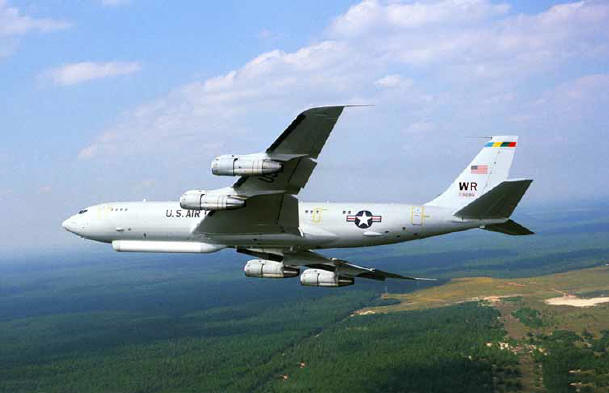|
|
|

|
|
The E-8C Joint Surveillance Target Attack Radar System (Joint
STARS) is a long-range, air-to-ground surveillance system
designed to locate, classify and track ground targets in all
weather conditions. As an airborne battle management and command
and control platform, it conducts ground surveillance to develop
an understanding of the enemy's situation and to support attack
operations and targeting that contributes to the delay,
disruption and destruction of enemy forces.
While flying in friendly
airspace, the joint Army-Air Force program can look deep behind
hostile borders to detect and track ground movements in both
forward and rear areas. It has a range of more than 150 miles
(250km). These capabilities make "Joint STARS"
effective for dealing with any contingency, whether actual or
impending military aggression, international treaty
verification, or border violation.
"Joint STARS" evolved from
U.S. Air Force and Army programs to develop, detect, locate and
attack enemy armor at ranges beyond the forward area of troops. In 1982, the programs were consolidated
and the Air Force became the lead agent. In May 1984, the Chiefs
of Staff of the Air Force and Army made the final decision to
put the "Joint STARS" radar on a Boeing 707 platform. In April 1988, Grumman was able to put
together an E-8A "Joint STARS" prototype on the first
rebuilt Boeing 707 and complete a test flight without the radar
sensor. The Defense Acquisition Board made
major program changes. It increased the number of E-8 aircraft
to be built to 22 from the 10 originally planned, and approved a
program plan to use new Boeing 707 (E-8B) aircraft
instead of used (E-8A) platforms. The first two E-8A
development airplanes were 20-year-old commercial Boeing 707s,
whose conversion difficulties and questions of remaining service
life pushed the board toward having subsequent aircraft be E-8B
airframes.
|
|
